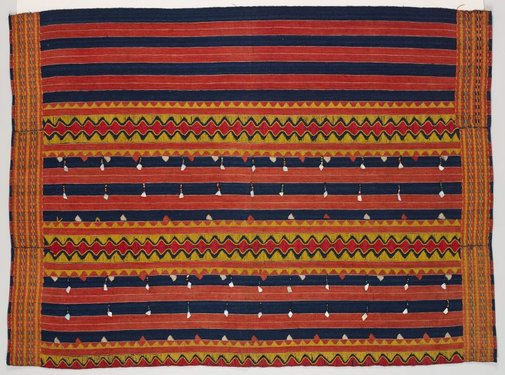The Tapis of Kalinga Tribe

The province of Kalinga is one of the many places in the Philippines where the practice of traditional backstrap loom weaving not only survives but thrives.
The tapis , a costume indigenous to the Kalinga and Apayao. It is a rectangular cloth , women wear as a wraparound skirt. The garment is woven with backs trap body tension looms, embroidered with nature inspired patterns and are sometimes adorned with mother of pearl platelets and shells, which represent wealth prestige in the area.
In the Northern Luzon, women from the town of Lubuagan in Kalinga weave to earn an income that ivital in providing the needs for families. Weaving in Kalinga is a tradition that is passed on to the subsequent generations from mother to daughter. Girls begin to weave as early as 10 years old. Men also participate in making thecraft. Some of the design includes mountains, birds, lakes and stars.
Kalinga weaves are characterized by the traditional color combinations of red and black stripes and the use of beads. Many traditional Kalinga weaving designs and patterns remain unchanged through generations, with weavers taking care not to make alterations since the colors and details have specific meanings. Red, for instance, symbolizes bravery while black represents the earth or the ground. Mountain symbols are embroidered in yellow, a color that also symbolizes wealth and fertility.
KALINGA HANDWOVEN FABRICS SHOWING GEOMETRIC PATTERNS.
Kalinga traditional garments include the ka-in wraparound skirt for women and the be-e g-string for men. There are different design variants of each, such as the pilakpak, ilaglis, silugwid, and gilamat for the skirt and kilayao, sillayuti, and pilagpagen for the g-strings. These garments are worn during rituals, festivals, weddings, and other special occasions.

Comments
Post a Comment